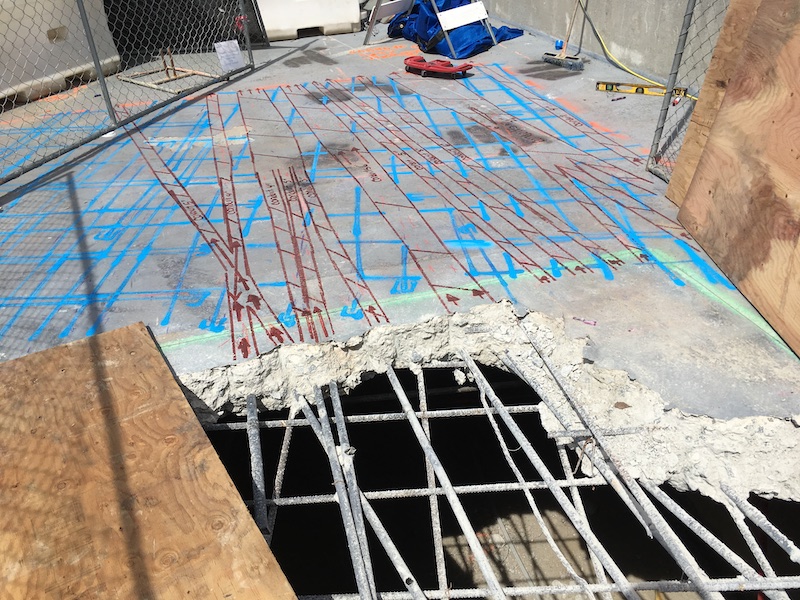RainierGPR Concrete Scanning Demystified: Every Little Thing You Required to Know
RainierGPR Concrete Scanning Demystified: Every Little Thing You Required to Know
Blog Article
Harness the Strategic Edge of Concrete Scanning for Unparalleled Project Success and Top Quality Assurance
In the realm of modern-day construction and infrastructure growth, the utilization of concrete scanning innovation has actually emerged as an essential device for guaranteeing task success and maintaining high quality criteria. The true power of concrete scanning lies not just in its capacity to improve project results but also in its ability to transform conventional practices, setting a new standard for accuracy and effectiveness in the construction market.
The Importance of Concrete Scanning
Concrete scanning is a crucial action in building and construction jobs to ensure the safety and security and honesty of frameworks. By using various scanning modern technologies such as Ground Permeating Radar (GPR) and electromagnetic induction, building and construction teams can non-destructively evaluate the subsurface of concrete structures to determine prospective hazards like rebar, avenues, or post-tension cables. This details is critical for task service providers, designers, and supervisors to make enlightened decisions and avoid expensive errors during the building and construction process.
One of the main reasons why concrete scanning is so essential is its capability to stop crashes and injuries on the building site. Accidentally reducing with an online electrical conduit or destructive post-tension cables can have tragic effects, not just in regards to safety and security yet also in terms of project hold-ups and economic effects. By carrying out extensive concrete scanning prior to any exploration, cutting, or coring tasks, construction groups can mitigate dangers and develop a much safer working atmosphere for everyone entailed.
In enhancement to security considerations, concrete scanning also plays a crucial role in making sure the long-term durability and top quality of the framework. By spotting any kind of flaws or anomalies concealed below the surface area, such as gaps or delamination, very early treatment can be carried out to attend to these problems prior to they intensify right into even more significant problems. Eventually, spending in concrete scanning is an aggressive measure that can save time, cash, and sources in the future, while likewise upholding the greatest standards of construction excellence.
Advanced Innovation for Specific Results

By including these advanced technologies into concrete scanning practices, construction teams can improve process, decrease job delays, and make sure the total top quality and success of the task. The accuracy and effectiveness supplied by these tools add substantially to the task's success by promoting educated improving and decision-making top quality guarantee measures.
Enhancing Task Efficiency and Timelines

Furthermore, concrete scanning allows groups to identify structural weaknesses and prospective dangers early on, permitting prompt remediation and avoiding mishaps that might hinder job timelines. The real-time information supplied by scanning devices assists in educated decision-making, leading to smoother sychronisation amongst various trades and stakeholders. This improved cooperation reduces disputes, boosts productivity, and eventually speeds up task distribution.
Furthermore, by proactively dealing with concerns through concrete scanning, construction teams can follow timetables better, decrease downtime, and optimize resource allotment. The capability to discover concealed barriers and validate architectural honesty successfully adds to overall task effectiveness and timelines, making sure successful results and client contentment.
Ensuring Safety and Risk Reduction

Danger reduction methods can be enhanced with the detailed details offered by concrete scanning, making it possible for job groups to make educated choices that decrease the likelihood of unanticipated incidents. Furthermore, by accurately mapping out subsurface problems, service providers can prevent costly rework, delays, and damages to existing frameworks, even more adding to general task safety and security and success. Applying concrete scanning as a regular practice not just ensures a much safer workplace yet also imparts confidence in stakeholders pertaining to the job's dedication to high quality and risk management.
Quality Control With Concrete Scanning
Concrete scanning plays an essential duty in supporting quality control criteria within construction projects. By using innovative scanning technologies such as Ground Permeating Radar (GPR) and Concrete X-ray, task managers and engineers can guarantee the honesty and quality of concrete structures. Through concrete scanning, prospective flaws, such as spaces, cracks, or reinforcing bar congestion, can be found non-destructively, permitting prompt interventions to maintain the structural integrity of the project.
Quality control through concrete scanning not only assists in recognizing existing concerns however likewise allows proactive measures to stop future problems that could endanger the safety and security and long life of the framework. By carrying out thorough scans at vital phases of building and construction, groups can confirm the accuracy of structural view website plans, validate the positioning of essential components, and attend to any type of deviations promptly. This aggressive technique reduces rework, reduces pricey hold-ups, and eventually leads to the distribution of top notch, long lasting structures that exceed or fulfill market standards.
Verdict
In final thought, concrete scanning plays a crucial function in guaranteeing task success, high quality, safety and security, and efficiency guarantee. The tactical edge provided by concrete scanning enables for aggressive risk reduction and enhances overall job monitoring.
In the world of modern building and framework advancement, the application of concrete scanning innovation has emerged as a crucial tool for guaranteeing task success and maintaining quality standards. By integrating check here these innovative technologies into concrete scanning techniques, building and construction groups can simplify workflows, decrease project hold-ups, and ensure the general quality and success of the task.Provided the important nature of project performance and timelines in building and construction administration, the focus currently moves towards ensuring safety and security and mitigating dangers within the project setting.Concrete scanning plays a crucial function in supporting high quality assurance criteria within building and construction jobs. By utilizing advanced scanning technologies such as Ground Permeating Radar (GPR) and Concrete X-ray, task supervisors and engineers can guarantee the integrity and quality of concrete structures.
Report this page